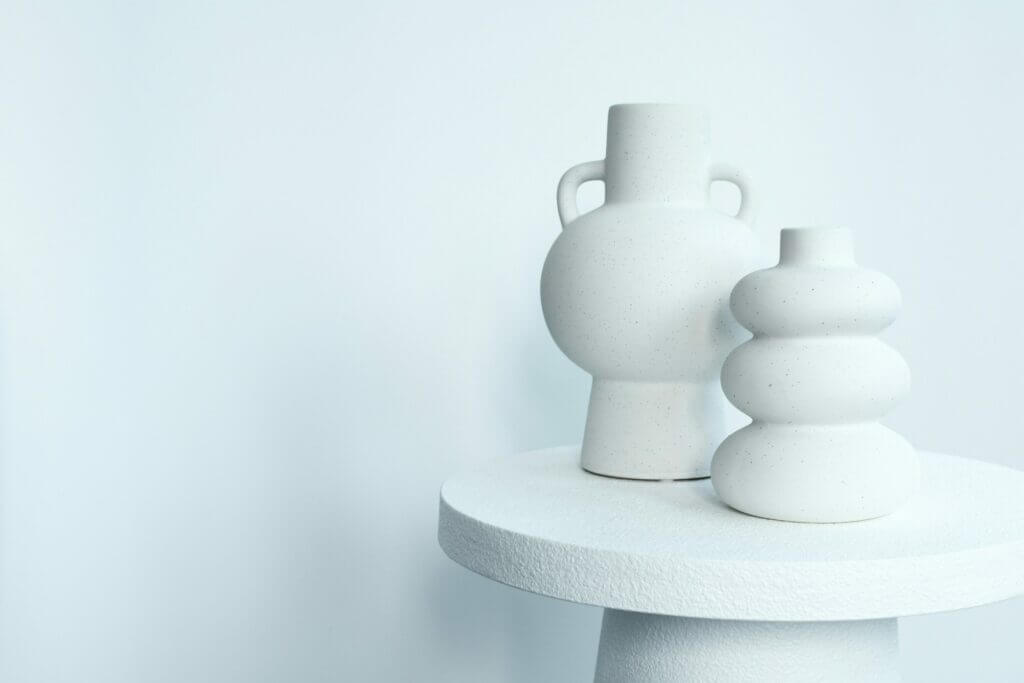Clean, Clear, and Surprisingly Strategic
I’ll be honest: I’m a big fan of the minimalist web design look. But you know who’s not always a fan? Search engines.
That doesn’t mean minimalism is off the table. It just means if you want to do it well — and to still get found online — you need to build a smart strategy around it.
What Is Minimalist Web Design, Really?
Merriam-Webster defines minimalism as “a style or technique (as in music, literature, or design) that is characterized by extreme spareness and simplicity.”
In real life and online, I’m all about simplicity. But when it comes to websites, minimalism still has to work hard. That means walking a fine line between clean and cold — between sleek and sterile.
The best minimalist sites strike that Goldilocks balance: not too much, not too little. Just right.

It’s Not About What You Remove — It’s About What You Leave In
Minimalist web design doesn’t mean boring. It’s just intentional. Every element should have a purpose — and nothing should compete for attention.
This might look like:
- Simple color palettes (think black and white, or a soft cream and navy)
- Clean typography that leads the eye
- Carefully placed shapes or icons instead of heavy imagery
- Short, skimmable copy divided into bite-sized sections
- Generous white space that gives everything room to breathe
Sometimes, the most powerful designs are the quietest ones.
Is Minimalist Web Design Right for Your Business?
It’s not for everyone, and that’s okay. Minimalist design works best for brands that want to communicate clarity, confidence, and calm. It’s especially effective when your audience values simplicity or when your product or service speaks for itself.
When done right, minimalist web design can feel inviting, not empty. Focused, not sparse. It can help your ideal client zero in on your message and take action, no distractions.
How to Nail Minimalist Web Design (Without Hurting SEO)
Here’s the tricky part: minimalist websites often use fewer words — but search engines want more.
So how do you find the balance?
1. Use Space and Typography Wisely
Don’t skip the text — instead, make it beautiful. Play with font type, size, line height, and spacing. Use layout to create rhythm. Your words can still breathe, even if there are more of them.
2. Stay Consistent with a Simple, High-Contrast Palette
Stick to one or two colors max, with a pop of contrast where you want to draw attention. Use light backgrounds for most content, and go dark when you want a visual shift.
3. Simplify Your Copy (But Don’t Ditch It)
Be intentional. Make every word count. Break up your content with headers, bullet points, and short paragraphs.
4. Use Minimal Graphics or Imagery
If you’re using photos, make sure they’re simple, brand-aligned, and don’t overpower your content. Clean line art or icons can add just enough visual interest.
5. Prioritize Accessibility
Good contrast, legible fonts, and clean navigation are key. Minimalist or not, your site should be usable for everyone.
Minimalism That Converts
A minimalist website might look effortless, but behind the scenes, every decision is intentional. From the layout to the copy to the white space in between, it all works together to guide your visitor toward a goal.
Want help figuring out whether minimalist web design is the right fit for your brand? I’m here for that.
Let’s build a website that not only looks amazing, but works beautifully too.
Frequently Asked Questions
Is minimalist web design bad for SEO?
Not necessarily. While minimalist sites often use fewer words, which can impact SEO, you can still rank well by using intentional, well-structured copy, optimizing typography, and ensuring accessibility.
How can I make sure a minimalist site is still effective for SEO?
Focus on quality content, even if it’s concise. Use clear headings, skimmable sections, clean code, fast load times, and accessible design. Every element — including text — should serve a strategic purpose.
What are the key features of minimalist web design?
– Simple color palettes (often black and white or soft neutrals)u003cbru003e- Clean, legible typographyu003cbru003e- Limited use of images or iconsu003cbru003e- Generous white spaceu003cbru003e- Short, skimmable copyu003cbru003e- Intentional, uncluttered layout
What types of businesses benefit most from minimalist design?
Brands that value clarity, confidence, and simplicity tend to benefit most. It’s ideal for service-based businesses, creatives, consultants, and product-driven companies where the offering can speak for itself.
Can minimalist web design improve conversions?
Yes. A clean, distraction-free layout helps guide visitors toward your goal — whether that’s filling out a form, making a purchase, or booking a consultation. It removes noise and keeps the focus on the message.



John says:
This is such a thoughtful breakdown of minimalist web design — thank you for speaking to both the beauty and the strategy behind it. I really appreciate how you emphasize that minimalism isn’t just about removing stuff, but about being intentional with what stays. I especially like your point about balancing minimalism with SEO. Many minimalist sites skimp on text, but you highlight how to make your words count — using structured copy, meaningful headings, and good typography — so the site still performs. All in all, this is a great resource. Really well done — and super useful for anyone thinking of adopting a clean, minimalist style without sacrificing performance or personality.